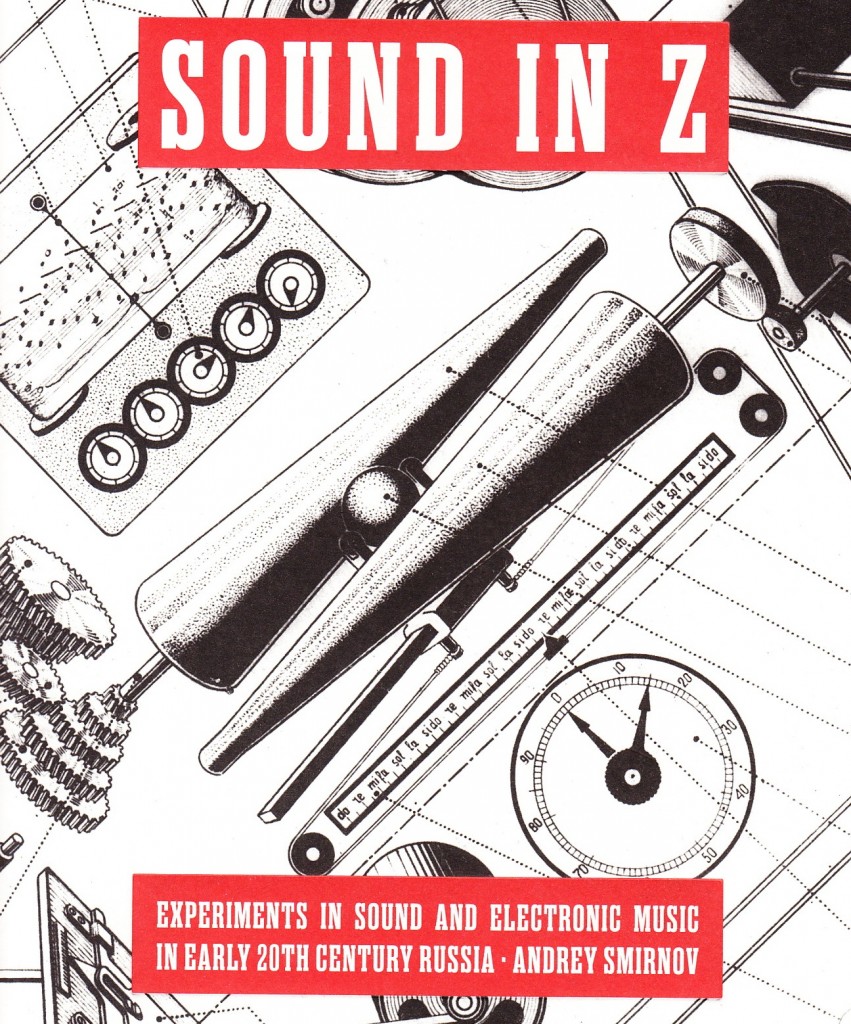 I was at the always-wonderful CCA recently looking for some new readings to bring to this semester’s Soundtrack course at SASD. So far I have only gotten through one of the volumes I purchased, but it is really something else and I’d like to recommend it unreservedly to all my readers. “Sound In Z: Experiments In Sound And Electronic Music In Early 20th Century Russia,” written by Andrey(i) Smirnov, was published this year by Koening Books, ISBN 987-3-86560-706-5. You can buy it here in the US and here in the UK.
I was at the always-wonderful CCA recently looking for some new readings to bring to this semester’s Soundtrack course at SASD. So far I have only gotten through one of the volumes I purchased, but it is really something else and I’d like to recommend it unreservedly to all my readers. “Sound In Z: Experiments In Sound And Electronic Music In Early 20th Century Russia,” written by Andrey(i) Smirnov, was published this year by Koening Books, ISBN 987-3-86560-706-5. You can buy it here in the US and here in the UK.
There is far too much revelatory information in this 261pp book for me to offer a thorough description, but suffice to say that between the 1918 Russian revolutions and the complete implementation of brutal Stalinist Totalitarianism in the mid 1930s there flourished a brief period of radical utopian thinking in the Soviet Union which expressed itself throughout the arts. Many of us are familiar with the new and highly influential Soviet graphic forms that emerged in this period; less documented are the incredible new directions in sound and audio that were undertaken. This book attempts to change that, with biographies of leading Soviet sound experimenters of the period, including Arseny Avraamov, who undertook intense experiments in graphically-drawn sound intended for playback via film-projector photocell.
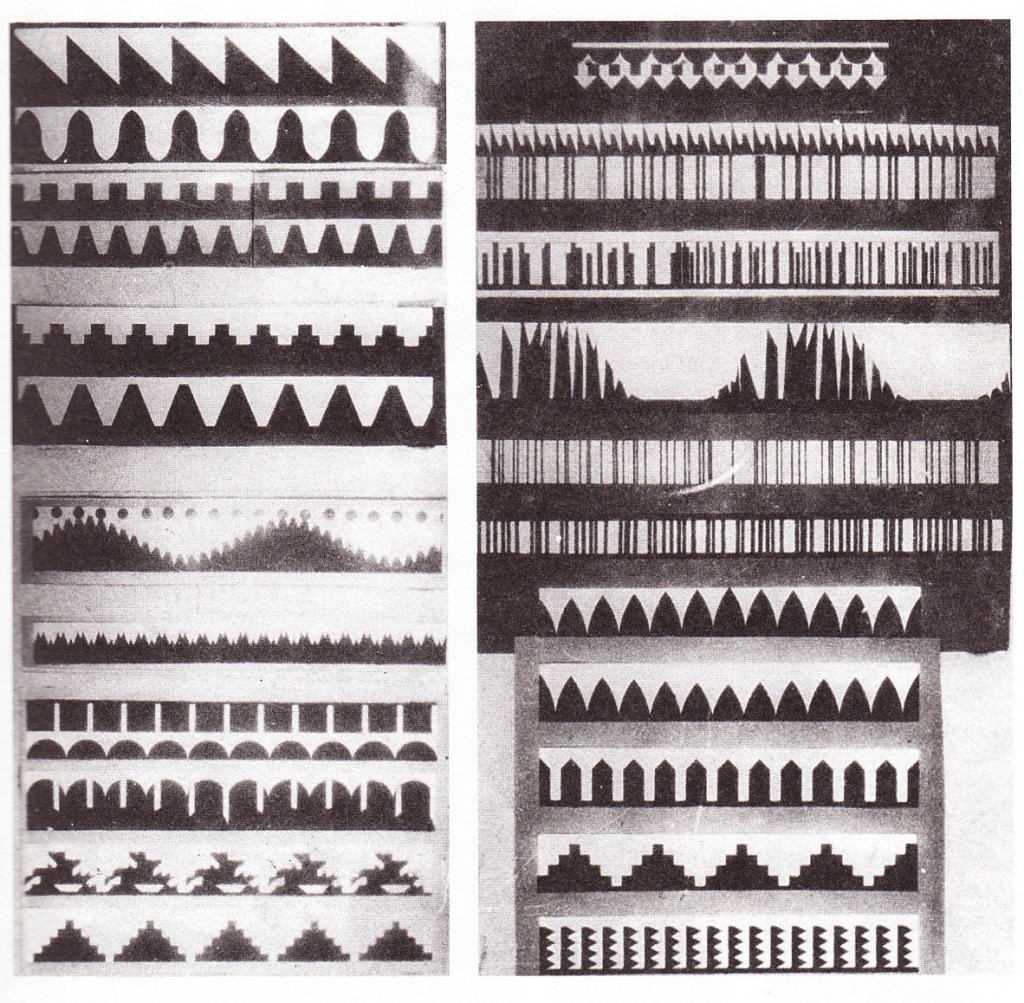 Evgeny Sholpo’s work is also covered in some detail, especially his Variophone series of…AAWs? Analog Audio Workstations? Essentially these were analog, graphically-interfaced additive synthesizers/sequencers… WHICH WERE MADE IN THE 1930s. Good lord. Here’s a clip:
Evgeny Sholpo’s work is also covered in some detail, especially his Variophone series of…AAWs? Analog Audio Workstations? Essentially these were analog, graphically-interfaced additive synthesizers/sequencers… WHICH WERE MADE IN THE 1930s. Good lord. Here’s a clip:
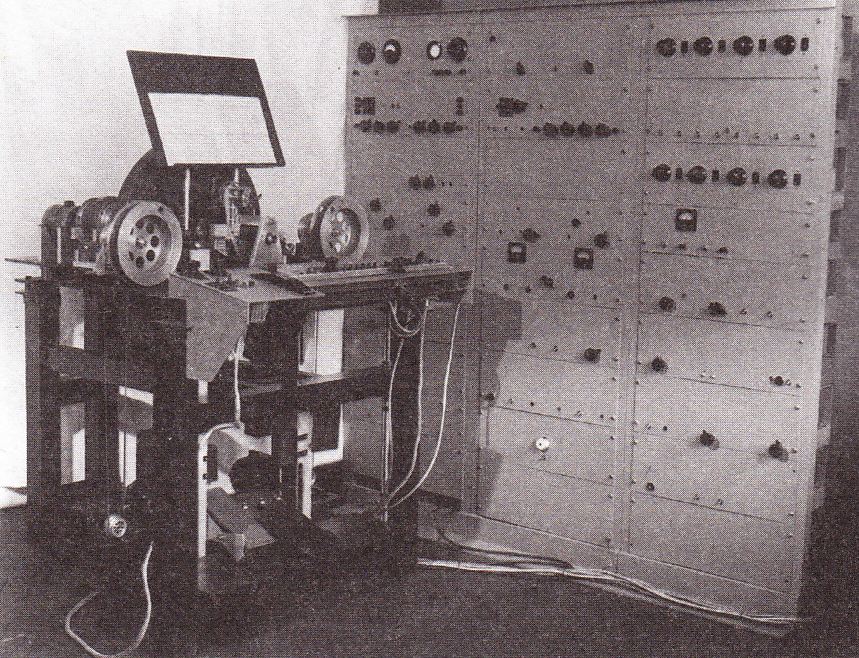 Above: an image of the final iteration of the Variophone c. 1949
Above: an image of the final iteration of the Variophone c. 1949
If the music itself sounds a bit regressive, this is due in large fact to the repressive political regime already in place by the early 1930s which sought to eliminate abstract and ‘avant garde’ artwork; many of these same composers and thinkers had been intensely involved with microtonal and ‘noise’ musics only a decade earlier; and many of these Soviet visionaries of the 1920s and 1930s were either executed or consigned to labor camps and/or tweedy backwaters as a direct result of their unconventional formal experiments.
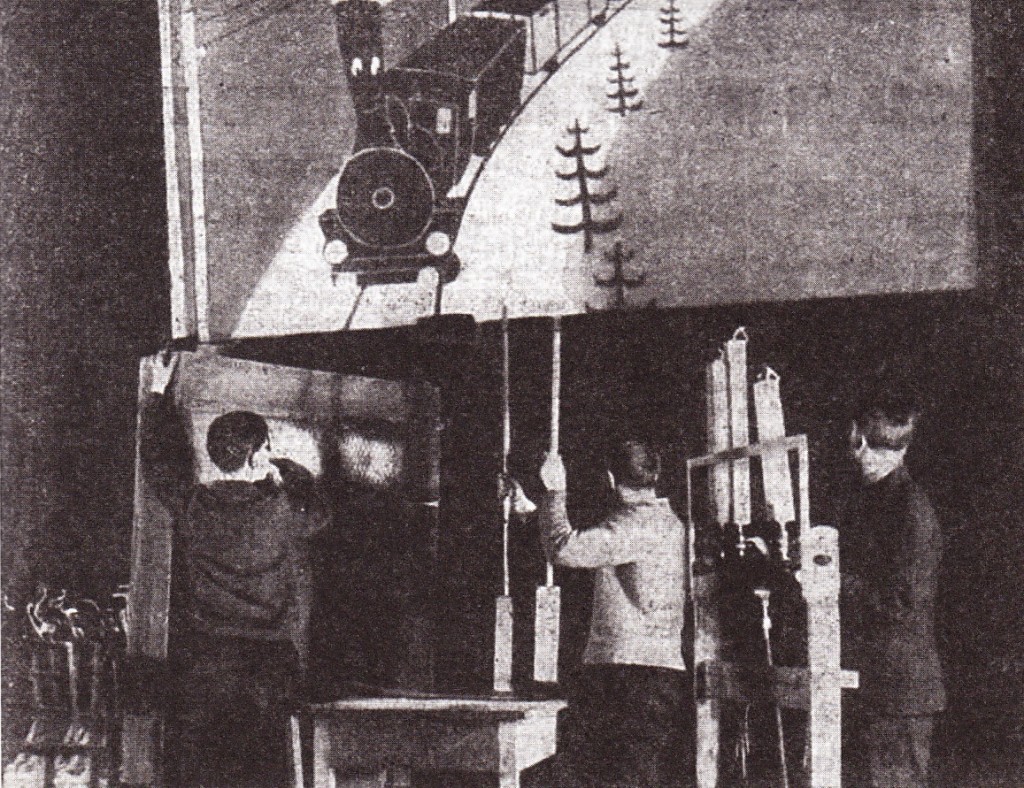 Above, ‘Shumoviks,’ or, roughly, sound-designers, perform some foley work as directed by Vladamir Popov, who composed sound-design for film with graphic renderings as depicted below:
Above, ‘Shumoviks,’ or, roughly, sound-designers, perform some foley work as directed by Vladamir Popov, who composed sound-design for film with graphic renderings as depicted below:
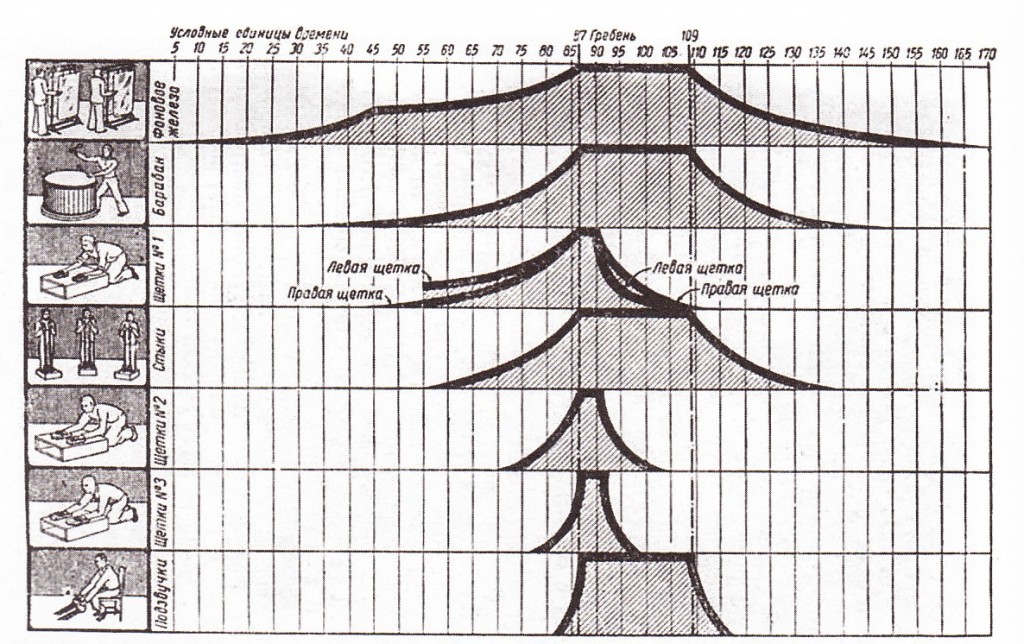 There is just such a wealth of fascinating ideas and weird dead ends (often, quite literally dead-ends, as the work of many of these pioneers was ended by their execution or exile) explored in this book; really a new wonder on every page. If you were ever enthralled by the genius of Leon Theremin and his well-documented contributions to modern music and electronics, well guess what: there were dozens of other geniuses working alongside him, mining different but equally adventurous veins, and now their stories are finally being told in the English language. Had their work not been terminated and repressed by the terrible Stalinist state regime, we would likely have incredibly different audio-tools in our hands today. If you work in sound-design, audio software development, or use synthesizers in your musical work, you must read this book.
There is just such a wealth of fascinating ideas and weird dead ends (often, quite literally dead-ends, as the work of many of these pioneers was ended by their execution or exile) explored in this book; really a new wonder on every page. If you were ever enthralled by the genius of Leon Theremin and his well-documented contributions to modern music and electronics, well guess what: there were dozens of other geniuses working alongside him, mining different but equally adventurous veins, and now their stories are finally being told in the English language. Had their work not been terminated and repressed by the terrible Stalinist state regime, we would likely have incredibly different audio-tools in our hands today. If you work in sound-design, audio software development, or use synthesizers in your musical work, you must read this book.
All images in this article are scanned from the book reviewed here.
4 replies on “It Could Have All Gone So Differently”
NOW THIS is some incredible archeological digging, my friend! Thanks for posting the book link and the scans.
I’m on buying this NOW!
I’m in love with these sounds. Why are we not investigating this form of sound production? I’d love a VSTi or sample machine inspired by these sounds.
Interesting that they’ve created waveform-like structures like sawtooths and trapezoids. In the Carlos-style classical piece there’s a voice which sounds like a narrow pulse. I wonder what the correlation between patterns and timbre is. Ach, so many questions.
Brilliant find 🙂
Remember, Russian engineer Lev Theremin pretty much invented electronic music (by accident!) during that period.
[…] (Walther Koenig, 2013). Theremin, not surprisingly, was not the only Russian sound inventor. (More here.) Smirnov is the founding director of the Theremin Center for Electroacoustic Music in Moscow. The […]